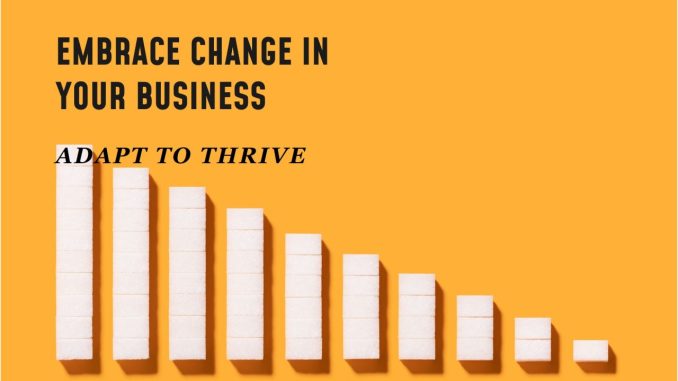
Businesses today are no longer confined to the role of economic engines. They are increasingly recognized as platforms for influence, agents of transformation, and catalysts for change. Whether you’re leading a startup, managing a legacy brand, or building a consultancy, the potential to shape culture, drive innovation, and impact society is embedded in the very structure of your enterprise. The question is not whether your business can be a force for change—it’s whether you’re willing to design it that way. Change doesn’t always come from sweeping gestures. Often, it begins with a shift in mindset, a redefinition of purpose, and a commitment to aligning operations with values.
At the heart of this shift is the recognition that businesses operate within ecosystems, not silos. Every decision—how you source materials, treat employees, engage customers, or communicate your brand—ripples outward. These choices shape perceptions, influence behavior, and contribute to broader narratives. A company that prioritizes ethical sourcing, for example, doesn’t just improve its supply chain—it educates consumers, pressures competitors, and elevates industry standards. The impact is cumulative. When businesses act with intention, they create momentum that extends far beyond their immediate sphere.
Being a catalyst for change also means embracing transparency. In an age where information travels fast and scrutiny is high, openness is no longer optional—it’s strategic. Customers want to know what you stand for, how you operate, and why you make the choices you do. This doesn’t mean broadcasting every internal decision, but it does mean communicating with clarity and integrity. A business that shares its sustainability goals, acknowledges its challenges, and invites dialogue builds trust. That trust becomes a foundation for loyalty, advocacy, and influence. In business, credibility is currency. And transparency is how it’s earned.
Leadership plays a pivotal role in this transformation. Leaders who view their business as a vehicle for change must model the values they wish to scale. This involves more than setting vision—it requires embodying it. When leaders prioritize empathy, curiosity, and accountability, those traits cascade through the organization. Teams become more collaborative, cultures become more inclusive, and innovation becomes more human-centered. For example, a CEO who champions mental health initiatives not only supports employee well-being but also signals that care is a core business principle. That kind of leadership doesn’t just inspire—it activates.
Innovation is another lever for change. Businesses that challenge norms, rethink systems, and explore new models often unlock solutions that benefit more than just their bottom line. A company that develops accessible technology, for instance, may open doors for underserved communities while expanding its market. Innovation rooted in purpose tends to be more resilient, more relevant, and more impactful. It’s not about chasing novelty—it’s about solving real problems in meaningful ways. When businesses innovate with empathy and foresight, they become architects of progress.
Community engagement further amplifies a business’s role as a catalyst. Whether through partnerships, philanthropy, or grassroots initiatives, businesses have the capacity to support and uplift the communities they serve. This isn’t about optics—it’s about reciprocity. A business that invests in local education, supports small suppliers, or collaborates with nonprofits contributes to a healthier, more vibrant ecosystem. These efforts build goodwill, deepen relationships, and reinforce the idea that business success and social impact are not mutually exclusive. They are, in fact, deeply intertwined.
Culture is another dimension where change takes root. The internal environment of a business—how people are treated, how ideas are shared, how decisions are made—shapes its external impact. A culture that values diversity, equity, and inclusion doesn’t just attract talent—it drives innovation and reflects the world it serves. When businesses cultivate cultures of belonging, they become microcosms of the change they wish to see. This requires intentional design, ongoing reflection, and a willingness to evolve. Culture is not static—it’s a living system. And when nurtured with care, it becomes a powerful force for transformation.
Even small businesses have the capacity to catalyze change. Scale is not a prerequisite for impact. A local café that sources ingredients from nearby farms, pays fair wages, and creates a welcoming space contributes meaningfully to its community. A freelance designer who chooses to work with mission-driven clients helps amplify causes that matter. The key is alignment—ensuring that actions reflect values and that every decision, no matter how small, contributes to a larger purpose. Change doesn’t require a megaphone. Sometimes, it begins with a whisper that grows louder through consistency and care.
Ultimately, viewing your business as a catalyst for change is about embracing responsibility and possibility. It’s about recognizing that every enterprise, regardless of size or sector, has the power to shape the future. This doesn’t mean abandoning profit—it means redefining it. Profit becomes not just a measure of financial success, but a reflection of value created, lives improved, and systems transformed. When businesses operate with this expanded lens, they don’t just grow—they lead. They become examples of what’s possible when commerce meets conscience, and strategy meets soul. And in a world hungry for progress, that kind of leadership is not just welcome—it’s necessary.